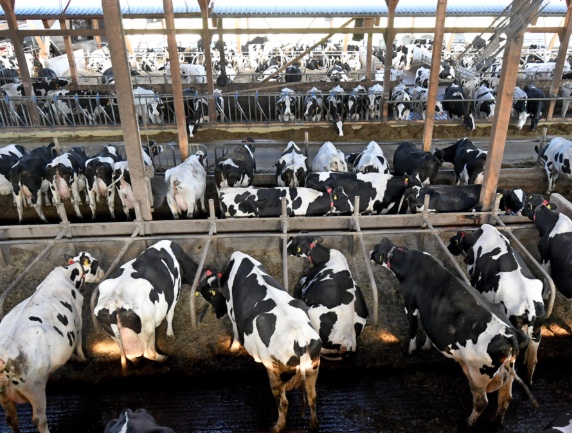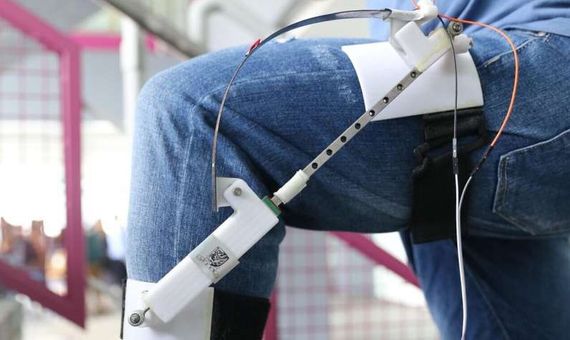Climate change is here to stay in the global political agenda, and the use of expressions like climate crisis and climate emergency are becoming increasingly common to stress the severity of the situation in which our planet finds itself. In this context, it’s worth asking whether we are considering all possible measures that could counter global warming. It’s time to consider the viability of actions that have not yet been explored, despite how surprising or strange they may seem.
From genetically modified humans that create less environmental damage to recycling our own urine, we review some uncommon measures that could represent an unexpected boost, if not an essential component, in the fight against global warming.
Recycling human waste
According to Time magazine, human beings produce 290 million tons of feces and 1.98 billion liters of urine per year. What if we could recycle our own waste? Although it may seem unpleasant at first sight, the idea has been studied for years now. In fact, the Bill and Melinda Gates Foundation launched the campaign Reinvent the Toilet Challenge in 2011, and one of its objectives was to promote technological innovation in toilets that recycle resources like energy, water and nutrients from waste.
One of the biggest obstacles this idea faces is the population’s refusal to consume their own recycled waste. A 2015 study found that just 40 percent of a sample of survey respondents would be willing to drink water obtained from a recycling process, even when the process was meticulous and resulted in water more pure than bottled water.
Refrigerators and air conditioners: the unknown villains
All refrigerators and air conditioning systems contain chemical refrigerant gases that absorb and release heat to enable the cooling: the so-called Hydrofluorocarbons, or HFC gases. HFC gases were used to replace halocarbons, or CFC gases that previously had this task, after the Montreal Protocol established the drastic reduction of CFCs in 1987 due to the damage they were causing to the ozone layer. HFC gases started to be used as a replacement. While they do not have a negative impact on the ozone layer, they have 1,000 to 9,000 times greater capacity to warm the atmosphere than carbon dioxide.

According to data from Project Drawdown, an international organization that researches the most viable global climate solutions, measures so frequently demanded like recycling food waste or restoring tropical forests would not be as effective against climate change as replacing this type of gas with others that perform the same function without warming the atmosphere.
Human engineering
Artificially inducing a slight intolerance to red meat in humans in order to foment a food industry that causes less environmental damage, or increasing people’s altruism with medication in order to make the population more willing to contribute to the common good of sustainability. These measures to stop climate change could seem like they came out of dystopias, yet this is what philosopher Matthew Liao proposes in his article on how to tackle climate change through human engineering. “To combat climate change, we can either change the environment or change ourselves. Given the enormous risks associated with changing the environment, we should take seriously the idea that we may need to change ourselves.”
Beyond his surprising proposals, the author stresses how important it is not to rule out human engineering when exploring policies to fight global warming and its potential value is considered along with other types of measures. “It may turn out that human engineering is not the best way of tackling climate change. But to concede this now would be to ignore the widely acknowledged fact that we do not currently know which solutions to climate change will be the most effective.”
Access to education for all girls worldwide
A fundamental right for which a lot of work unfortunately still needs to be done around the world, could have a positive effect on the conservation of the planet. Slowing global population growth could be crucial to starting to reduce greenhouse gases.

The Women’s Education and Fertility study: results of 26 demographic and health surveys examined the impact of women’s education on demography.
Studies verify that higher education among women is directly related to a lower birth rate in a consistent manner. Furthermore, some other potential positive effects would also be beneficial to the future of the planet: lower probability of contracting and contributing to the transmission of infectious diseases, or being better prepared to tackle climate change, among others.
Growing meat, algae and insects
Meat and dairy production is responsible for a large amount of greenhouse gas emissions, such as methane and carbon dioxide. Artificial meat is an alternative that is being explored to reduce the environmental impact. This meat is produced from animal cells grown in a laboratory, reducing the need to raise animals to obtain meat, producing fewer greenhouse gas emissions and using fewer resources than conventional production.

However, considering a flexitarian diet is the most realistic. This diet is based on vegetarian products, with a small amount of animal products while changing habits and food customs in order to diversify and include new food sources such as molluscs, bivalves and algae… as well as insects, new varieties of legumes, seeds, etc.
Painting the wall white
Centuries before the laws of thermodynamics were described, it was known that buildings in places with high temperatures should be painted white to lower the temperature inside. In the 20th century, the invention of air conditioning provided a definitive solution to cool buildings. However, according to the International Energy Agency, air conditioners and fans currently consume 10 percent of global electricity.
To reduce this demand, researchers are working on more sustainable systems. Some of these systems go back to the old concept of painting, or covering the buildings – an ancient idea but with 21st century technology.
The whitest paint to date was invented by scientists at Purdue University and could drastically reduce the use of air conditioning systems around the world. It is an acrylic paint with a calcium carbonate filling that reflects 95 percent of sunlight and lowers the temperature up to two degrees.
Turning our bodies into energy plants
The human body could become a source of renewable energy in which respiration, heart beats, our movement and even blood flow through arteries could be used by tiny electric plants.

Some scientists are already working on building these plants using special materials that are reduced to nanometric sizes. The goal is to create a new generation of devices that can use energy from the body to feed pacemakers, warning systems for diabetics and many other devices that will measure vital signs in real time and without using more electricity than that which our body can generate.
Comments on this publication